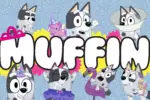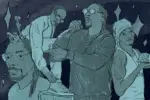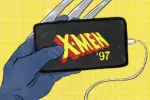Cartoon Network launched in October 1992 and, living up to its namesake, it became the first channel to broadcast cartoons 24/7. After it purchased the Hanna-Barbera library, which produced iconic cartoons such as “The Flintstones,” “The Jetsons” and “Scooby-Doo,” as well as the entire Metro-Goldwyn-Mayer (MGM) cartoon archive, Cartoon Network could claim just under 9,000 hours worth of animation.
Set up with a catalog of classic cartoons that could last the channel a full year without needing to repeat a single episode, no other channel could compete with Cartoon Network’s expansive repertoire. However, while the cartoons did see commercial success, most of their recognition came before the channel’s founding. Cartoon Network needed to make its own original animations if it wished to stay relevant — broadcasting the same shows that ended over 20 years prior could only get them so far, after all. So, in 1994, the network created Cartoon Network Studios, which produced shorts by contracted animators both from outside the channel and within.
For the first few years, Cartoon Network would use animated shorts as test pilots for new shows. Out of this came the first shows that would become flagship series for the channel and bolster its popularity. Shows like “Dexter’s Laboratory,” “The Powerpuff Girls,” “Courage the Cowardly Dog” and “Johnny Bravo” achieved classic status years later and remain the face of the channel to millennial and late Gen Z viewers.
The channel’s new cartoons grew in popularity, and in 2000, it launched Boomerang, a channel that would become the home for the cartoons previously owned by Hanna-Barbera and MGM — making space for future originals on Cartoon Network in the process. A year later, in 2001, Cartoon Network introduced a late-night block of programming geared toward a more mature audience. Known as Adult Swim, it began broadcasting at 8 p.m. (9 p.m. on Sundays), signaling the switch with the announcement: “All kids out of the pool for adult swim.”
Similar to Cartoon Network, Adult Swim released several of its own critically acclaimed series like “Rick and Morty” and its most recent well-received show, with a 94% average audience score on Rotten Tomatoes, “Smiling Friends.”
Once the original Cartoon Network shows reached their final seasons, the channel entered its first major transitional period and the cartoons that followed did not disappoint. Many of the previous showrunners, including the producers of “The Powerpuff Girls” (Craig McCracken) and “Dexter’s Laboratory” (Genndy Tartakovsky), spearheaded the next wave of notable shows.
The cartoons that aired between 2001 and 2007, however, did not last as long as their predecessors. While shows like “The Grim Adventures of Billy and Mandy,” “Teen Titans” and “Foster’s Home for Imaginary Friends” still found a place among the Cartoon Network classics, most aired for less than six seasons and were phased out rather quickly, leaving the network to enter what is considered its “flop era.”
Cartoon Network’s Flop Era (2006-2009)
The beginning of the temporary lull for Cartoon Network actually started in the early 2000s with the end of its first wave of original shows and snowballed all the way down to mid-2009 with the introduction of Cartoon Network’s live-action block of programming, CN Real. At the time, competing channels Nickelodeon and Disney Channel gained commercial success with live-action shows that aired alongside original cartoons. Cartoon Network attempted to take a slice of the proverbial live-action pie, but fell short due to the fact that it was specifically a — cartoon — channel. To rub salt in the wound of the channel’s primary audience, CN Real necessarily replaced a block of cartoons, many of them well-liked. This resulted in the cancelation of several shows as well as the resignation of one of the channel’s best animators, creator of “The Powerpuff Girls” and “Foster’s Home for Imaginary Friends” McCracken.
Cartoon Network’s executives recognized the risk in branching out toward live-action programming and initially rejected the idea, but the network’s president at the time, Stuart Snyder, continued to push for it. CN Real ultimately featured nothing more than rip-offs of live-action shows created by Disney and after a short-lived, one-year run, the network backpedaled and canceled the programing block after declining ratings and major backlash from its viewer base.
To repair channel-audience relations, Cartoon Network released two new shows that heralded the network’s entrance into a renaissance of sorts — the golden age of Cartoon Network.
The Cartoon Network Renaissance (2010-2020)
The year before McCracken resigned from Cartoon Network, he established a 20-month-long project named The Cartoonstitute as a way to mass-pitch a number of potential shows that could rescue the network from its four-year dry spell. Out of the 14 shows that made it into the project’s 22-minute showcase, J.G. Quintel’s “Regular Show” emerged as one of the two that jump-started Cartoon Network’s revival. What set “Regular Show” apart from the rest of Cartoon Network’s other shows was its brand of humor that walked the line between adult and teen just enough to get the green light from network executives.
Both Quintel and Pendleton Ward graduated from the California Institute of the Arts (or CalArts, the alma mater of a majority of Cartoon Network’s animators) in 2005, and while Quintel found work at Cartoon Network via an internship in 2004, Ward didn’t enter the scene until 2008, when he contributed to the storyboarding for “The Marvelous Misadventures of Flapjack” — a show widely regarded as the catalyst for the CN renaissance.
Two years post-graduation, Ward pitched his first major solo project, “Adventure Time,” to Nickelodeon in 2007. Despite Nickelodeon taking a “hard pass” twice on Ward’s idea, the founder of Frederator Studios, Fred Seibert (who worked on shows like “SpongeBob SquarePants” and “The Fairly OddParents”), vouched for Ward. Although Frederator Studios had more influence at Nickelodeon, the studio also had connections with Cartoon Network, eventually helping to make the channel the show’s new home.
What set “Regular Show” and “Adventure Time” apart from previous Cartoon Network shows is that the characters matured alongside their viewers. The concept of aging characters existed before the conception of either show, but the initial brash and childish nature of both series evolved into something more plot-driven to reflect their maturing audiences. By tackling concepts like loss and the fear of what one’s future will be like, “Regular Show” and “Adventure Time” fostered a relatable environment for young adults within an otherwise light-hearted Cartoon Network.
The Future of Cartoon Network
During the reign of “Adventure Time” and “Regular Show,” several other shows inspired by both their concepts and art styles began to emerge at a rapid pace. “Adventure Time” storyboard artist and CalArts alum Rebecca Sugar created “Steven Universe,” which started an era of inclusion and diversity not seen before on Cartoon Network. “Steven Universe” introduced several canonically LGBTQ+ characters and became the stepping stone for minority representation in modern cartoons and animated movies. Likewise, “Regular Show” storyboard artist and writer Owen Dennis created the critically acclaimed series “Infinity Train,” which currently holds a high score of 100% on Rotten Tomatoes.
The impact of Cartoon Network’s golden age is felt even outside of the channel as former network animators branched out into other studios, such as “The Marvelous Misadventures of Flapjack” writer Alex Hirsch, who created his now-finished series “Gravity Falls” on Disney; Ward, who contributed to Netflix’s “The Midnight Gospel”; and Quintel, who created the HBO Max exclusive animated show “Close Enough.”
Although the renaissance reached its end after the “Steven Universe” short spin-off series, “Steven Universe Future,” finished in March 2020, there will no doubt be another crop of influential shows on Cartoon Network’s horizon in the not-so-distant future.
















